A recent study shows that during commercial breaks, radio delivers on average 93% of its lead-in audience. But how many of these people are the original listeners?
December 2011: Arbitron, Media Monitors and Coleman Insights publish What Happens When The Spots Come On, 2011 Edition. It offers valuable details about how radio commercials affect audience levels, based on Portable People Meter data. It triggers some questions as well. Let’s see if we can find some answers.
Significant amounts of PPM data
The report is based on a full year of Portable People Meter research from the entire USA and includes:
- 18 million commercial breaks
- 62 million minutes of spots
- 866 radio stations
- 48 PPM markets
- 58.000 devices
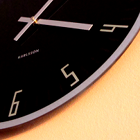 Commercial breaks of 1-6 minutes
Commercial breaks of 1-6 minutes
Arbitron, Media Monitors and Coleman Insights together compared the average audience level in each minute of a 1-6 minute commercial break to the same in the minute before the spots (the so-called lead-in audience). They focused on advertising breaks of back-to-back played, recorded audio of at least 30 seconds per spot. Live read commercials, station promos and breaks featuring only spots of less than 30 seconds were all excluded.
2½ stopsets of 3½ minutes
Within a 24-hour period, radio stations (in these 48 American PPM-markets) aired an average of:
- 2½ stopsets an hour
- 9 minutes of spots an hour
- 3½ minutes of commercials per break
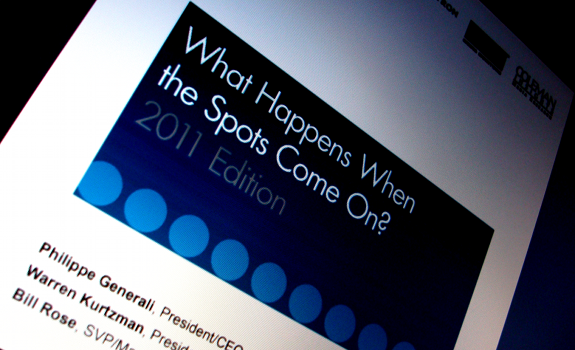
‘What Happens When The Spots Come On, 2011 Edition’ is published by Arbitron, Media Monitors and Coleman Insights, based on 1 year of Portable People Meter radio data from the entire USA (photo: Thomas Giger)
Radio commercial break research insights
Key findings about how spot breaks influence radio ratings are the following:
- Commercial breaks up to 3 minutes deliver over 95% of the audience level before the break
- Stopsets up to 6 minutes deliver at least 85% of the number of listeners before the ad break
- Morning shows deliver a higher audience level during spot breaks than other dayparts do
- Older listeners show a higher acceptance of commercial breaks than younger audiences
- Talk radio listeners don’t get turned off by spots as much as music format audiences
- Spoken word stations: the audience level is driven by format, not by demographic
- Music stations: the audience delivery during commercials depends on the demo
- Urban and Hispanic formats keep the highest audience rates during breaks
- Findings are very consistent throughout the year and in the entire USA
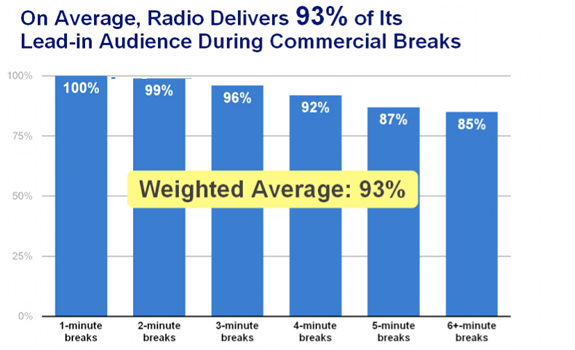
Commercial breaks of 1 to 6 minutes maintain a weighted average of 93% of the audience level that exisited in the minute before the stopset (all data and graphs in this article: Arbitron, Media Monitors and Coleman Insights)
Afro-American and Hispanic listener loyalty
The researchers found out why morning shows have a relatively high number of listeners during commercial breaks. It’s because breakfast hours feature shorter ad breaks and a more constant inflow of radio listeners. Unfortunately the report doesn’t mention the reason why of all music formats, Urban and Hispanic have the highest audience levels during commercial breaks. It might be related to audience demographics; age and other characteristics (e.g. US Hispanics are frequent radio listeners).
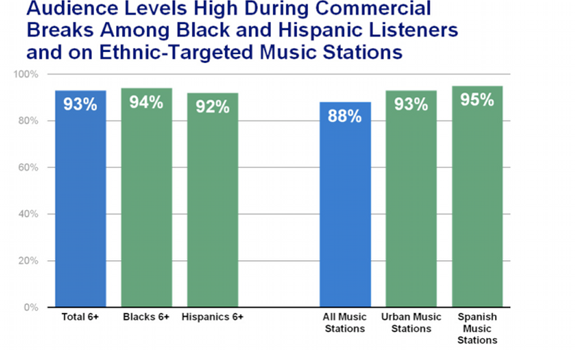
Compared to all music formats, the average audience levels during commercial breaks are significantly higher on Urban and Spanish music stations, maybe driven by their specific listener demographics and backgrounds
Young listeners switch stations sooner
That older listeners are more ‘station loyal’ during commercials than young audiences is not a big surprise. Youth preferences quickly change, as I’ve learned from a music scheduling panel. My theory is that young people have grown up with technology and much content from many (old and especially new) media, so they developed a shorter attention span. And it seems logical that speech radio listeners tolerate spots more than music station audiences do. After all, most commercials are (perceived as being) a form of speech. It matches listener expectations of News and Talk radio audiences.
 Speech radio: audience level format driven
Speech radio: audience level format driven
News & Talk stations are an exception: practically all their listeners accept commercials on a large scale. Because talk radio audience levels during commercials are very high in every demographic (so it’s format driven, not age dependent) and the spot break duration almost doesn’t matter. Even in the ‘critical’ 18-34 demo, spoken word formats deliver 97% of their audience during spot breaks. Maybe one more reason why the growth area for radio is speech?
Music radio: audience level demographic driven
While for talk stations the audience demographic is almost irrelevant in terms of listening behavior during spot breaks, it’s definitely relevant for music radio programmers. Country stations deliver more listeners during commercials than CHR formats do as Country attracts a more than average concentration of 35- to 64-year-olds. CHR does the same for 18- to 34-year-olds. I think (especially young) music stations should plan their stopsets carefully. (Also because music listeners perceive commercials as an interruption; see the article on how to program radio commercial breaks strategically.)
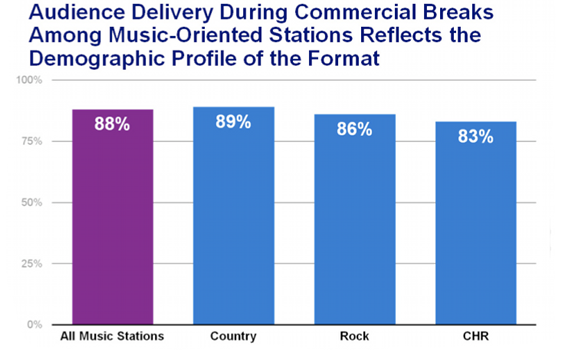
Music station program directors should schedule commercial breaks carefully because their audience sees spots as an interruption of the flow, especially if their format attracts young listeners (as they switch stations more often)
‘Commercial perception is not reality’
Arbitron, Media Monitors and Coleman Insights summarize that while the existing perception inside the advertising (and even radio) industry is that radio looses many listeners during commercial breaks, on average ‘radio delivers almost 93 percent of listeners during spot breaks’. Their conclusion is that this finding ‘dispels the myth’ that during commercial breaks, fewer people listen to the radio than before the stopsets begin. That sounds good, but it leaves me with the following question:
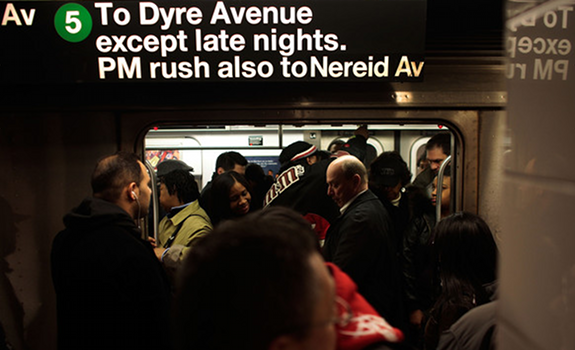
Radio commercial breaks are like a subway that stops at a station; people jump on and off (photo: Chris Hondros)
Does it mean that 93% of the people who listened before a commercial break stay during that break – or that people leave and others come back instead of them?
Kim Myers of Arbitron Inc. says to Radio))) ILOVEIT: “Think about it like a subway in New York City. It makes frequent stops. When it pulls into a station, a bunch of people gets off and a bunch of people comes back on. From the audience level that you have when you start a commercial break, you have 93% when you go back into programming. It may not be the same listeners. Some get off and some get back on. That’s what the study showed us.”
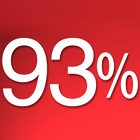 How many percent of the actual listeners stays and how many percent tunes out during the break, and is replaced by new listeners who tune in during that break?
How many percent of the actual listeners stays and how many percent tunes out during the break, and is replaced by new listeners who tune in during that break?
“I don’t know if they looked at that or not. The goal was to show that radio delivers. That 93 percent number is what the essence of the study was.” Therefore she couldn’t give in-depth info, like how many of these 93 percent are actually the same people that were tuned in before the break.
Commercial breaks exchange complete audience?
The above question is inspired by what I’ve learned in a session of the UK Radio Festival where Dennis Clark shared useful Portable People Meter radio programming insights. He explained that a Country station in Atlanta lost one hundred percent of the original audience during a 6-minute commercial break, but they were all replaced by a whole new batch of listeners by the end of the break. Now that’s an interesting phenomenon! (Also because Country is a format where you’d expect more ‘audience loyalty’ as their listeners include many 35- to 64-year-old people.)
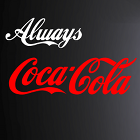 Repeat your most important message
Repeat your most important message
It indicates that advertisers always reach a relatively consistent amount of people, but that some listeners will just hear a part of the commercial. Keeping this in mind, I think that radio commercials should communicate the most important part of the message several times within a spot. To introduce a product or create brand awareness effectively, I’d say: include your product name or brand name (or sound logo) at least once in every 10 seconds.
Questions about radio commercial effect
I’ve contacted Coleman Insights to hear if they have found similar cases to verify the theory that long spot breaks may cause a complete station audience population to be swapped by a new army of listeners. Main questions: how many of these ‘93%’ are people who listened to the station 1 minute before the break, how many arrived during the stopset, in what tempo the number of listeners declines during the break and what is the ‘recovery time’ after the spots are over? When I get the answers, you’ll be the first to know. (How’s that for a teaser?)
Read also:
- How To Program Radio Commercial Breaks Strategically
- Programming (related articles)
Stay tuned, follow us: @RadioILOVEIT





Add Your Comment